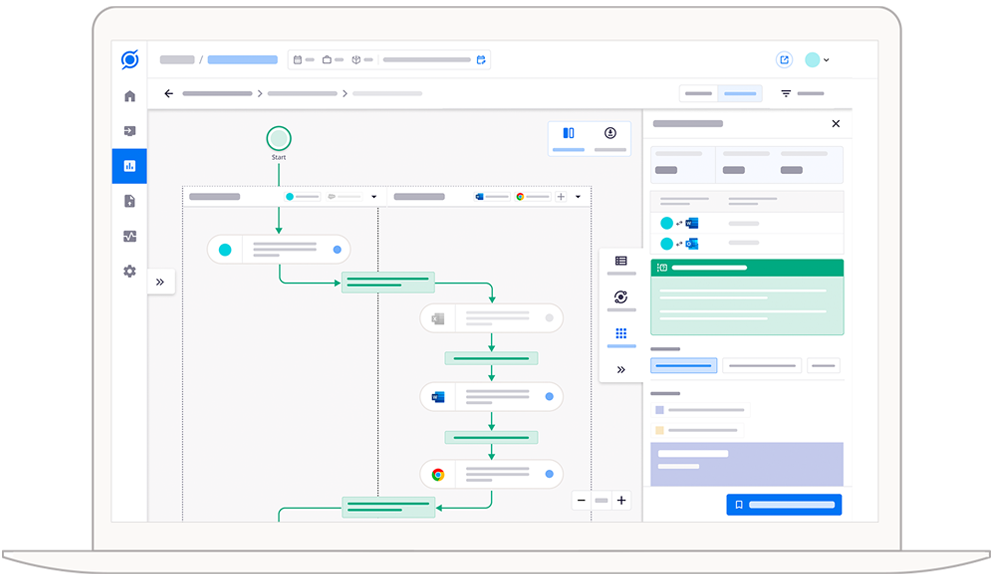Customer Stories
Ecosystem
Work Graph
Company
FMCG
Scout improved agent productivity and enhanced overall efficiency by 30%

The Challenge
A global Fortune 500 beverage manufacturer with 100+ brands, 15+ recent acquisitions faced unexpected operational inefficiencies in order processing, leading to delays, errors, and ultimately, a jeopardized customer experience and lost sales.
Despite investments in top-tier CRM and Order Management systems, the order management teams were struggling with high attrition, low morale, and an inability to meet business outcomes, putting the company at risk of significant reputational harm and revenue challenges.
Despite investments in top-tier CRM and Order Management systems, the order management teams were struggling with high attrition, low morale, and an inability to meet business outcomes, putting the company at risk of significant reputational harm and revenue challenges.
Location
Global
Industry
FMCG
100+
Brands
15+
Acquisitions
Attempted Solution before Scout
Team requested for an additional
1,400 hours
for Manual Discovery Workshops
The Leadership mandated their internal Digital Transformation team along with their System Integrator to rectify the situation, who undertook a two-pronged approach. They deployed a process mining solution and attempted manual ‘discovery workshops’ to understand team workflows.
However, these methods proved time-consuming as they requested 1400 hours from business teams to complete these discovery workshops. These teams were also working out of different locations across the globe, which added to the complexity.
This turned out stressful for the already overburdened teams, and ultimately failed to provide the holistic insights needed.
However, these methods proved time-consuming as they requested 1400 hours from business teams to complete these discovery workshops. These teams were also working out of different locations across the globe, which added to the complexity.
This turned out stressful for the already overburdened teams, and ultimately failed to provide the holistic insights needed.
Enter

In response to the ongoing issues, the Head of Customer Experience and the Head of Automation introduced Scout to find and fix the problem. Scout's AI model could be quickly put into action across 7 teams in 12 countries, because it didn't need complicated integration with current systems.
The AI analysed how operations management teams navigated across various applications, mapping out how and why work happens the way it does within the entire order management function.
The AI analysed how operations management teams navigated across various applications, mapping out how and why work happens the way it does within the entire order management function.
Scout's AI model could be quickly put into action across
7 teams in 12 countries,
because it didn't need complicated integration with current systems.
Scout to “find and fix”
Step 1: Find
As the first step, the AI decoded the work patterns of the order management team and connected them with business activities, by analysing interactions between the team and their software. It then automatically classified these work patterns as either core order management activities or non-core activities.
Based on this analysis, within two weeks, Scout’s AI model provided the following insights:
Based on this analysis, within two weeks, Scout’s AI model provided the following insights:
30%
time was spent on core Operations Management and CRM applications
Contrary to existing assumptions the analysis revealed that only 30% of the team's time was spent on core Operations Management and CRM applications.
This startling statistic pointed to a massive work recall gap across the team, highlighting the disparity between the team’s understanding of how work is being done and how work was actually being done.
This startling statistic pointed to a massive work recall gap across the team, highlighting the disparity between the team’s understanding of how work is being done and how work was actually being done.
70%
time was spent on manual tasks
The AI also determined that the remaining 70% of the time was spent in manual tasks like email communications, spreadsheet management, and report creation. This high volume of manual work led to errors and delays, exacerbated by significant variations in order processing across different brand teams.
Scout’s AI model then further inferred the reason why the order management team spent so much time on non-core activities – information silos and disconnected systems. These bottlenecks were forcing the team to incessantly toggle between different applications, ultimately resulting in a loss of productivity for all the brand teams.
Step 2: Fix
Based on the above insights, Scout’s AI model recommended two levels of fixes:
Quick Fixes
These were ‘no-code’ fixes based on standardisation and user training
Provide focused training on existing Order Management - CRM system to improve adoption
Provide focused training on existing Order Management - CRM system to improve adoption
Leadership realized that order management teams and customers were accustomed to the business-as-usual ways of working over emails. Thus, they initiated a targeted awareness campaign for the OM - CRM system, aimed at familiarizing customers and order management teams with the new features and benefits of the system. This effort helped increase system adoption and reduce bespoke manual activities.
Improve self-service capabilities for customers:
Improve self-service capabilities for customers:
Post the awareness campaign, management’s goal was to empower customers with more control over their orders. To achieve this, customers were provided with tools and training to place orders, make changes to orders, track the status of their orders, and have real time visibility into the order process.
Standardization of management reporting:
Standardization of management reporting:
Leadership realized that they were part of the problem by insisting on several customized reports. They recognized that the customized reports required time investment and decided to standardize and automate them, allowing them to focus more on upselling and cross-selling activities
Deep Fixes
Systemic and long-term fixes planned across the organisation
Scout also provided detailed insights into the cost of unintegrated order management systems and, also the disconnection debt in the organisation. Based on these insights the leadership kicked off a digital transformation program to
Create an end-to-end workflow system integrating information inputs, information validation, business process rules, transaction processing & reporting, and compliance.
Study variations across how teams worked, standardized, and optimized processes.
Automate various functions like time-consuming manual validations in data maintenance activities such as contract activation, inactivation, and rebate settlement across different automation technologies like IDP, RPA, chatbots, etc.
It is important to note that in all of these recommendations, privacy was of the utmost importance – and no employee data was shared. Empathy was at the core of all recommendations and the focus was on addressing and improving the core issues i.e.
- Getting teams to work together across functions
- Fixing disconnected system
- Simplifying and optimizing work processes


Business outcomes
The strategic implementation of Scout's recommendations led to:
25%
Reduction in Delays and Errors: In order processing.
30%
Improvement in Agent Productivity: Enhancing overall efficiency.
10%
Improvement in Cash Flows: Reflecting a more streamlined order process.
Reduced Reputation Risk: By improving reliability and customer satisfaction.
How AI connects interaction data to business outcomes
Your business generates billions of data points from human-machine interactions. Scout, our AI model, deciphers this interaction data to unveil what often remains unseen—the hidden challenges your teams face at work and how they affect business outcomes, whether it's cost optimization, revenue growth, customer or employee experience, or business continuity.
The AI then provides data-based recommendations for the necessary interventions to address these challenges, paving the way for improved outcomes.
We call this lighting up the ‘dark side of the moon’.
The AI then provides data-based recommendations for the necessary interventions to address these challenges, paving the way for improved outcomes.
We call this lighting up the ‘dark side of the moon’.

See Scout in action.
Schedule your demo now!
